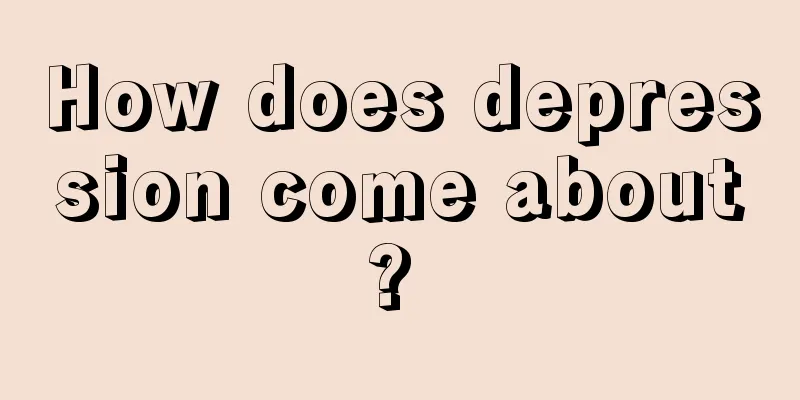How harmful is hair transplant?

|
Nowadays, more and more people are suffering from hair loss. Most people who have the conditions will choose to regrow their hair through hair transplantation. There are various advertisements for hair transplantation on the market now, and there are also many large and small hair transplantation hospitals. If you want to have a hair transplant, you must choose a regular and professional hospital. Don't believe in small advertisements, use medicine blindly, or go to some unqualified small clinics by yourself. So how serious are the dangers of hair transplantation? The dangers of hair transplantation 1. Hair transplantation can cause damage to hair follicles Hair transplantation transplants the entire hair follicle. The hair follicles are 2 to 3 mm below the skin and have a certain inclination angle, so we cannot observe them from outside the skin. Therefore, any slight deviation during the operation will cause damage to the hair follicles. It is difficult to completely avoid touching the hair follicles during surgery. And to transplant hair follicles, the capillaries around the hair follicles must be cut off first. So it will definitely have an impact on the surrounding tissues and even the remaining hair. It's like pulling out a tree without affecting the original land and leaving the roots intact. It's basically impossible. The number of hair follicles is fixed, and once a person is born, the number of hair follicles will only decrease and not increase. Once a hair follicle dies, it will never grow again. Therefore, hair transplant surgery will inevitably cause hair follicle loss, which will lead to a decrease in the overall number of surviving hair follicles after the surgery. That means less hair. 2. Damage to epidermal nerves Many people experience numbness and pain at the back of their head after a hair transplant. This is because the epidermal nerves are destroyed during hair transplantation, causing damage to the neurons. Large-area epidermal surgery on the entire head will certainly minimize the use of epidermal drugs in order to allow the hair follicles to implant as quickly as possible and not affect growth. This causes increased numbness and pain in the head. This phenomenon will continue for several weeks. It may even have a certain impact on the scalp's tactile sensation in the future, and it is normal for some areas to become numb forever. 3. Scalp swelling and congestion after hair transplantation, dry and cracked epidermis, and increased dandruff Hair follicles are supplied with blood through epidermal capillaries, providing the nutrients needed for growth. So each hair follicle is connected by capillaries. This also applies to sweat glands. When transplanting hair, the entire hair plant is cut off and removed, which will inevitably cut off the surrounding capillaries. The rupture of hundreds or thousands of capillaries will inevitably cause large-scale congestion and overflow of body fluids in the area. Drilling holes and planting in other places will have similar effects. After hair transplantation, the overall blood circulation efficiency of the epidermis will be reduced to varying degrees. Hair growth will be slower. And because of the massive destruction of capillaries. The sweat glands are also in a state of malnutrition for a period of time. This will also lead to a decrease in sweat and oil secretion, completely exposing the scalp, making it dry and cracked, and causing bacteria to multiply on the epidermis. 4. Severe epidermal infection after hair transplantation Hair transplantation involves removing a large number of hair follicles, which will inevitably cause a large number of wounds, and each hair may not be fully disinfected. If you do not pay attention to disinfection, or the environment is slightly unclean, postoperative care will not be in place. This can lead to infection after hair transplantation. Because there are thousands of epidermal wounds, the wound surface is large. The chance of infection increases significantly. It will also leave hidden dangers for subsequent recovery. Therefore, after hair transplantation, special washing and maintenance methods are required for a period of time. 5. No hair grows in the area where the hair is removed This should be considered the biggest problem with hair transplantation. Hair transplantation is actually a typical "taking money from one pocket to repair another" method, which is to transplant hair follicles from an area with intact follicles to an area with necrotic follicles. In this process, it is inevitable to cause damage to the hair follicles, especially to the area where the hair follicles are taken. If things go wrong, neither the east wall nor the west wall can be repaired. In addition, if we don’t figure out why the area where hair is falling out originally had hair but is slowly dying, and we transplant good hair there, I’m afraid that over time it will be difficult to avoid the death of the hair. It's like transplanting trees to the Gobi Desert without changing the soil and water. The result is certain. |
<<: Is hair transplantation effective?
>>: How to care for hair after hair transplant?
Recommend
Exercise precautions for early esophageal cancer
Regular exercise during the postoperative recover...
What are the factors that lead to colon cancer
In recent years, colorectal cancer has become one...
What should be avoided in the diet for hamartoma
The causes of hamartoma are not only diverse but ...
Aerobic exercise for hair loss
Many people may not know that aerobic exercise ma...
Occasionally go to bed without removing makeup
Putting on makeup has become something that almos...
Is the high incidence of esophageal cancer inherited from generation to generation?
Is esophageal cancer inherited from the previous ...
What should I do if my feet get blisters in summer?
When the weather is hot, our hands and feet are p...
Sequelae of radiotherapy for prostate cancer
There are many ways to treat prostate cancer, and...
Experts explain the five symptoms of gallbladder cancer
Gallbladder cancer is a malignant tumor with obvi...
Is pancreatic cancer contagious?
Is pancreatic cancer infectious? 1. Pancreatic ca...
What to put in foot soaks
Athlete's foot often plagues many people. Peo...
Stretching before and after exercise
Stretching exercises are required before and afte...
Is sleeping naked good for your health?
Is sleeping naked good for your health? This is a...
How to quickly treat a stuffy nose
Many people have experienced nasal congestion, wh...
How to treat and relieve bloating?
Many people, especially office workers, suffer fr...









